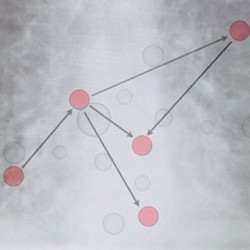By Helen Figueira
July 7, 2011
Time to read: 3 minutes
 Nitric Oxide Signalling group
Nitric Oxide Signalling group
CSC Nitric Oxide Signalling Group Head James Leiper and his team recently identified a potential drug treatment that could be use to combat a variety of diseases including septic shock, a condition that still kills hundreds of thousands of people each year (See: Shock to the System). This potential drug works by lowering nitric oxide levels, which are elevated in septic shock. Now new research has shown that the potential drug could also be used to treat pulmonary fibrosis, a condition that results in a build-up of collagen in the lungs that reduce lung flexibility and make it difficult to breath. Eventually the disease becomes life threatening, and current treatments remain ineffective.
Nitric Oxide Signalling group
CSC Nitric Oxide Signalling Group Head James Leiper and his team recently identified a potential drug treatment that could be use to combat a variety of diseases including septic shock, a condition that still kills hundreds of thousands of people each year (See: Shock to the System). This potential drug works by lowering nitric oxide levels, which are elevated in septic shock. Now new research has shown that the potential drug could also be used to treat pulmonary fibrosis, a condition that results in a build-up of collagen in the lungs that reduce lung flexibility and make it difficult to breath. Eventually the disease becomes life threatening, and current treatments remain ineffective.
Working on mice with pulmonary fibrosis, a team based at the Giessen Lung Centre in Germany collaborating with Dr Leiper found that the potential drug candidate reduced accumulation of collagen in the lungs and that lung flexibility in animals administered the drug remained at near-normal levels. The results raise hopes that this candidate can be developed into a drug that can be used to treat pulmonary fibrosis in humans. It also raises hope for sufferers of other diseases, as it is very likely that the drug could be used to treat fibrosis more generally.
Leiper explains: “Fibrosis plays a key role in the progression of a number of human diseases including pulmonary, renal and cardiovascular disease. We believe that we have identified a common mechanism that might significantly reduce the fibrotic component in several of these disease states. Interestingly, we have also recently demonstrated that in patients with chronic kidney disease (in which fibrosis plays a major role in progression) reduced activity of the enzyme that is the target of our drug is associated with much slower reduction in kidney function suggesting that this pathway is a natural regulator of fibrosis that can be harnessed therapeutically.”
These studies demonstrate that understanding the basic molecular mechanisms that underlie human diseases can lead to the identification of novel therapeutic strategies and the translation of basic research into the clinic.
SJ